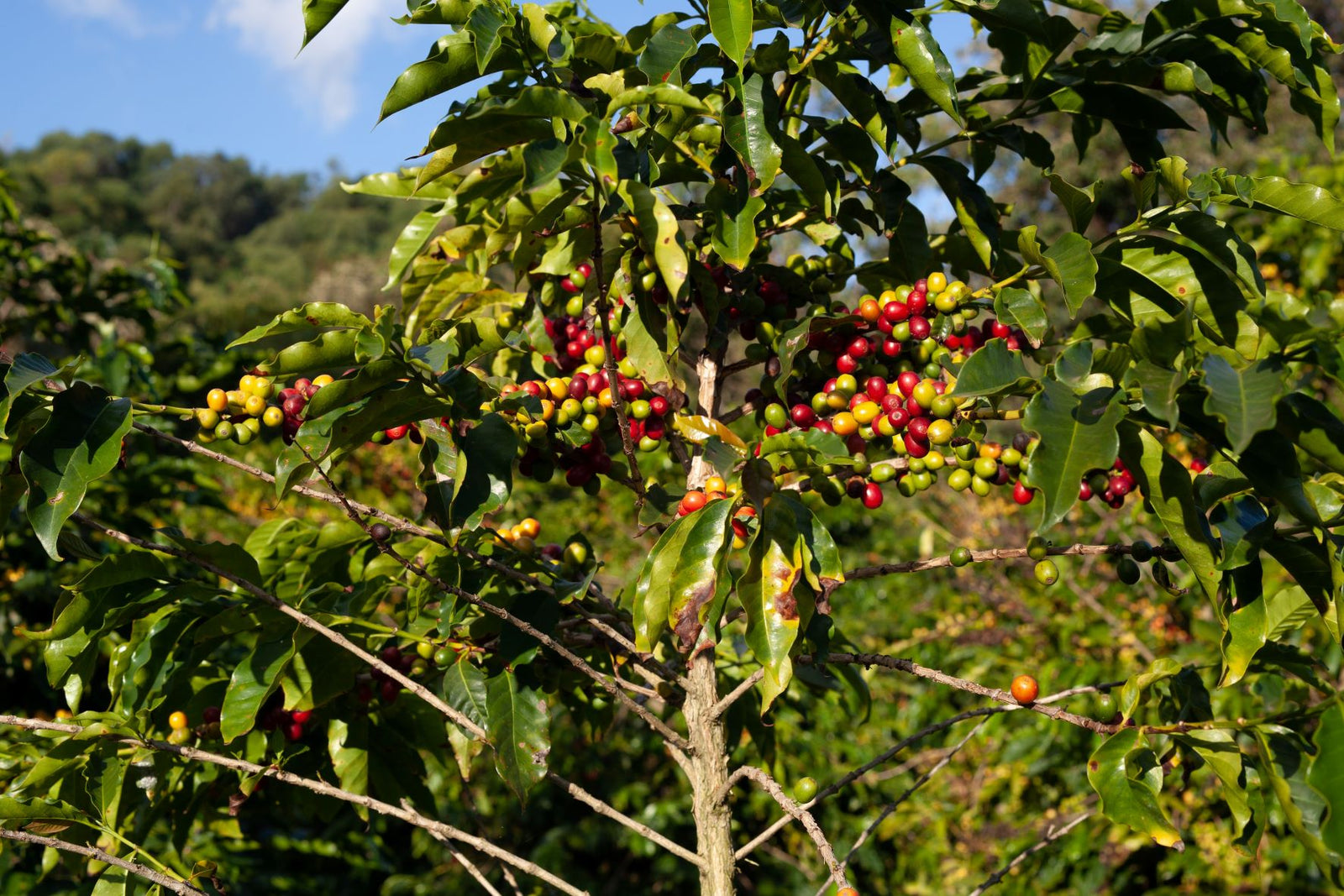The rising cost of living is something that is on everyone’s mind at the moment. The aftermath of the pandemic, war in Europe, and a host of other factors have seen prices rising at unprecedented levels. The coffee industry has not been immune to these rises. As a coffee roastery with over 40 origin coffees we have seen the price of some of our green beans jump by 100-150% over the last two years.
As part of our latest addition in the educational series, we thought it would be interesting to draw attention to why green coffee bean coffee prices have risen so much, and some of the issues the industry has been facing.
Like crude oil, minerals, and wheat, green coffee is a commodity, the price of which is dictated by supply and demand. If supply is up, but people aren’t wanting a morning caffeine hit, the price will drop. This was the case in the 1930s during the Great Recession. Bumper harvests and a fall in demand saw piles of coffee being burnt or dumped out at sea in a drastic attempt to control rock-bottom prices.
Recently however the opposite has been the case. Despite the impact of Covid-19 on high street businesses, demand has for coffee over the last couple of decades has been steadily increasing year-on-year. However, supply has, for reasons that will be introduced shortly, been down. This has driven prices to a 10-year high, up by 150% in two years in some cases.
Weather and Climate

One of the single biggest drivers of the increases has been poor harvests resulting from adverse weather conditions in the so-called ‘coffee belt’ (the region +/-25 of the Equator with the most optimal conditions for growing coffee). As with other crops, coffee production is reliant on the right environmental conditions for growing. Coffee plants generally thrive in a tropical climate with plenty of rainfall.
The 2020/2021 crop year posed a number of hurdles to the coffee growing industry. Farmers were first hit by drought, followed by one of the worst frosts ever recorded in the Minas Gerais, São Paulo and Parana Arabica coffee growing areas of Brazil, a country that in a normal year produces 35% of the world’s coffee. These weather conditions devastated one third of last years’ crop.
The effects of frost on coffee production are particularly acute because it can damage a plant beyond recovery. Farmers can of course re-plant, but coffee shrubs take around 5 years to reach maturity. Combined with high labour and fertiliser costs, some farmers are now looking to mitigate the financial risk by planting different crops instead.
Adverse weather conditions have not been isolated to Brazil either. The last couple of years have seen heavier than usual rainfall in Colombia, and hurricanes Lota and Eva in November 2020 which damaged much of the coffee crop in Honduras and Nicaragua.
Geopolitical Factors
Geopolitical factors have also been contributing to coffee price rises. In Colombia, a country with an 8.4% market share of coffee production in an average year, recent planned tax reforms from the Colombian governments saw civil unrest and thousands protesting in the streets. The movement of coffee within the country was greatly reduced and became stuck in warehouses and distribution centres rather than being exported. Furthermore, the situation also made products such as such as fertiliser used by coffee growers harder to come by.
Covid-19 continues to cause uncertainty and supply chain issues, even two and a half years since the first lockdown. Vietnam is a major player amongst the coffee growing nations, especially of the Robusta varieties. Lockdowns resulting from a surge in cases resulted in decreased exports from Ho Chi Minh City, and this caused supply chain deficits.
Shipping
Finally, we couldn’t write an article about rising coffee prices without drawing attention to the cost of shipping. The cost of getting a container shipment of green beans from coffee producing countries to Europe has in some instances increased 5-fold. This unprecedented increase is partly explained by the aftermath of Covid-19, as shipping containers were in the wrong places, and in short supply in others. Combined with HGV driver shortages, uncertainty as to when deliveries will arrive, have all added to the recent price increases.

What will the future bring?
You might at this point be asking if price rises are set to continue. As a coffee roastery we hope that the current trend will see some levelling off. Ultimately, future prices will fluctuate according to supply and demand characterises. There is reason to believe that prices may fall. Covid-19 will hopefully be less impactful in the months and years ahead, and whilst 2020/21 was a bad year for coffee producers in Brazil, annual fluctuations in production have been seen before. However, with demand steadily increasing, and greater uncertainty for coffee growers from climate change, there is also reason to be cautious. Ultimately coffee is a volatile commodity, making future prices hard to predict.
We hope that you have found this article interesting, and that you now have a better understanding of the complex logistics and pricing of green coffee beans. We also hope that this article hasn’t caused too much concern. We’ve had some supply chain issues, but rest assured that here at Redber we still be roasting fresh coffee 6 days a week, so your morning coffee is safe for now.

